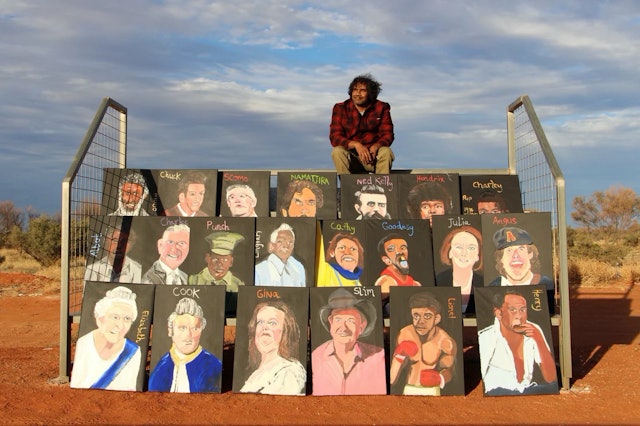Australia’s richest woman denied request to remove portrait of her, artist says she’s just painting the world as she sees it

We all love beauty, but does that justify restricting an artist’s creativity? Gina Rinehart, the mining tycoon known as ‘Australia’s Richest Woman’, has asked the National Gallery of Australia to remove her portrait from the gallery because she is unhappy with the way it is portrayed. The portrait, by award-winning Aboriginal artist Vincent Namatjira, was one of 21 portraits in his exhibition, and the gallery said it had rejected his request, prompting widespread debate online.
According to Forbes, mining tycoon Reinhardt has a net worth of US$30.9bn, and has long been at the top of Australia’s rich list thanks to his iron ore, oil and gas businesses, but he has become a controversial figure in Australia due to his comments on climate change and other issues. The portrait shows Reinhardt with a deformed head, drooping lips and a double chin.
The painting is part of the Australia in Colour exhibition, curated and created by renowned Aboriginal artist Namatira, which focuses on 21 of Australia’s most powerful and influential people, including Reinhardt, as well as portraits of the late Queen Elizabeth II and former Prime Minister Scott Morrison.

Award-winning Aboriginal artist Vincent Namatjira with other portraits in the series (NGA)
According to media reports, Reinhardt contacted the director and president of the National Gallery of Australia to request the removal of the painting and another work by the same artist, but this was refused. Penelope Benton, executive director of the National Association of Visual Arts Australia (NAVA), said in an interview, ‘While Reinhardt has the right to express her opinion of this work, she does not have the right to force the gallery to withdraw it simply because she doesn’t like it. The museum, on the other hand, said in a statement that it welcomes public discussion about the painting and the collection.
The incident has led to a lot of discussion about artistic freedom, but Namatira later said in a statement that he was just ‘painting the world as he sees it’ and hoped that people would think about the reasons why he paints powerful people through his paintings, to see the world from the surface. He hoped that people would think about the reasons why he painted these powerful people through his paintings, and that they would see the serious side of the issue from the surface.

